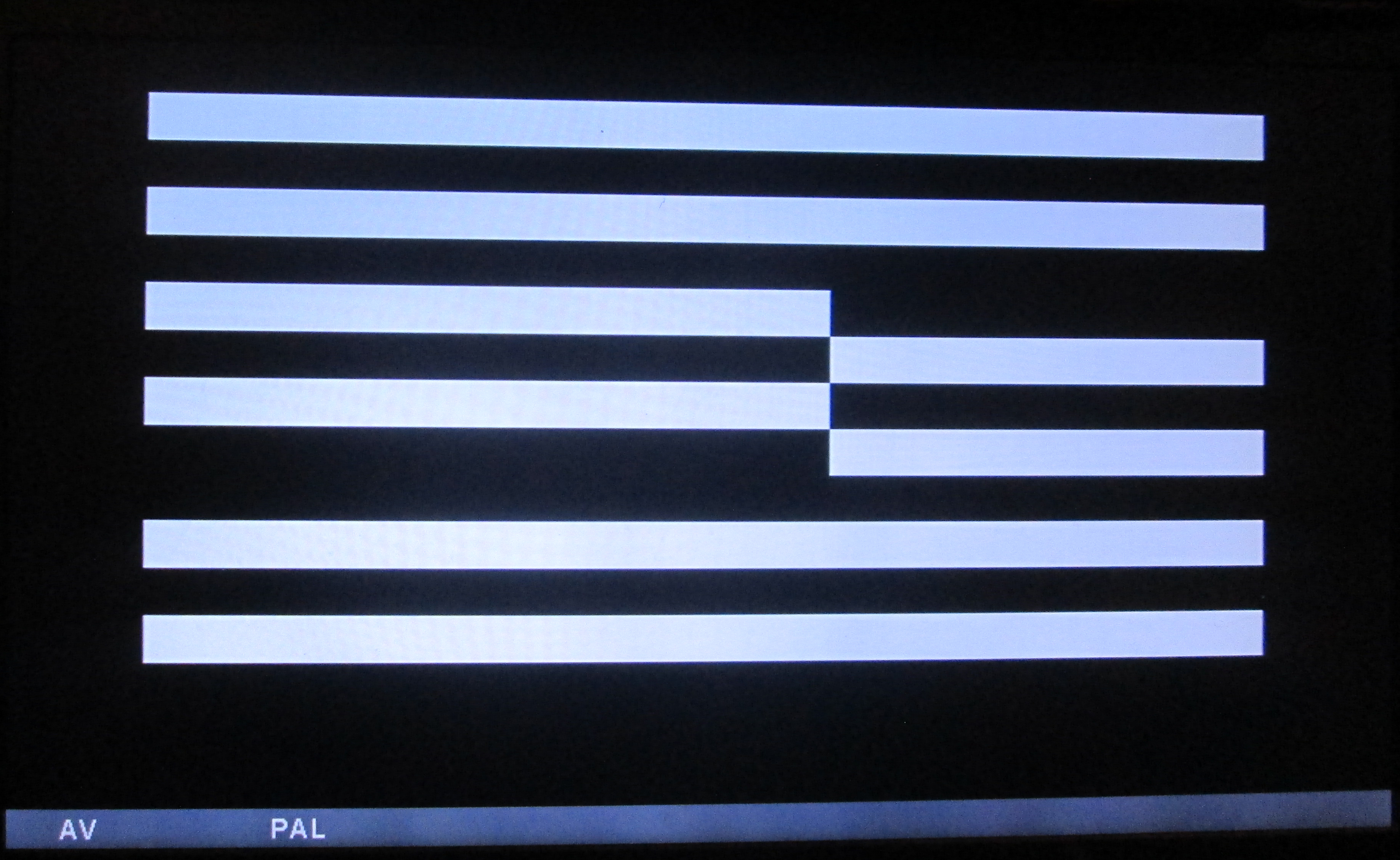Hello guys,
I'm new to the forum.
I am trying to get an Apple II clone working here.
I attach a photo of the motherboard and ROM card.
The computer turns on, keyboard light is on, but the computer doesn't beep and shows a unique pattern on the screen (see attached) and does not go into prompt.
I don't know what the issue is and whether it's with the motherboard, ROM card or keyboard.
I would appreciate any suggestions for a possible easy fix of such an issue, if you have experienced it before.
Thanks in advance,Joe




What you're calling a 'ROM Card' is a Disk II floppy controller clone. The computer should be able to run BASIC without the card installed.
What happens when you press Control-RESET on the keyboard?
Nothing happens. The keyboard doesn't seem to do anything.
I cleaned the board with contact cleaner.
The pattern changed (see attached) and there a bit of static from the speaker when I turn it on. Once it showed some random letters and flashing points on the screen, but reverted to the pattern.
AppleIIclone2screen2.jpg
That doesn't look like a malfunction -- that's an algorithmically-generated pattern, like the LFSR pattern that the Apple //e uses in its ROM-based diagnostics. That motherboard has copied several features of the Apple //e, so it's reasonable to infer that its ROM also copied the Apple //e diagnostics routine -- which activates automatically if the keyboard is not connected.
Does that pattern change every five seconds? If so, leave the computer switched-on for a minute to give the diagnostic routine time to finish -- if it's a ROM diagnostic then it will print a result on the screen, typically within about 35 seconds.
Sorry if I wasn't clear. The image is static.
Based on your comment that contact cleaner caused a change in the screen pattern, I would remove and reseat all the chips (one at a time!) on the motnerboard and see if that helps.
LLooking carefully at this motherboard, there are a few things that strike me as a liitle out of the ordinary.All of the EPROMS are 28 pin - this means that they are likely all 2764 (4 times larger than regular II plus capacity).Layout of board with the 64k (8 x 6164 type) and the spare pads here and there is almost identical to the Base 64A (Made in Taiwan) type machines. As sold in Asia, Oceania and Europe (typically) they had a 24pin 2764 EPROM for the F8 ROM and 24pin 2732 ERPOMS for all other roms (plugged into the larger 28 pin sockets) bank switched via Annuncator lines and including text editor/writer, extended monitor with breakpoint command and tiny assembler, pattern shape generator, basic sound routines in rom, self test, and firmware generated keyboard shortcuts.The basic layout and schematic is available on archive dot org . Search "Copam BASE64A User's manual"Boards marketed as a Base 64A are marked with 'COPAM 1983' typically or 'COPAM II' on the PC board. They are usually well processed boards and often have most of the IC's soldered into the board. Copam was a well known producer of Apple and IBM clone motherboards from Taipei, Taiwan. The board displayed seems a generic version of a Base 64a Motherboard.The 6502 in the board that johnqa2025 displayed is a made in Taiwan UMC (United Microsystems Corp) CPU. This is what the 'genuine UMC' UM6502 CPU looks like from the first half of the 1980's (unlike the remarked ones on Aliexpress with the blacktopping and fancy logo).